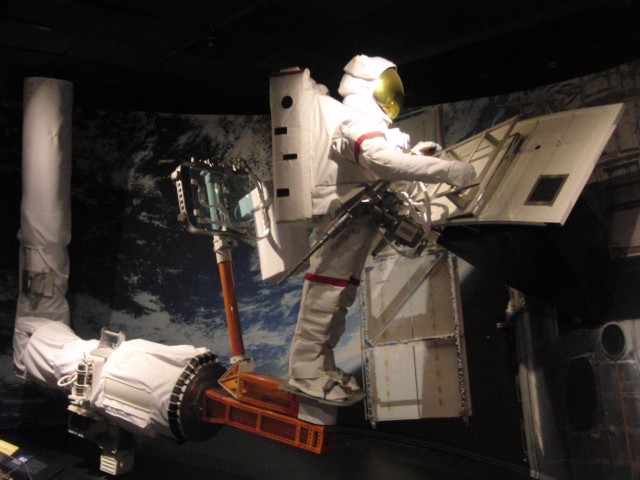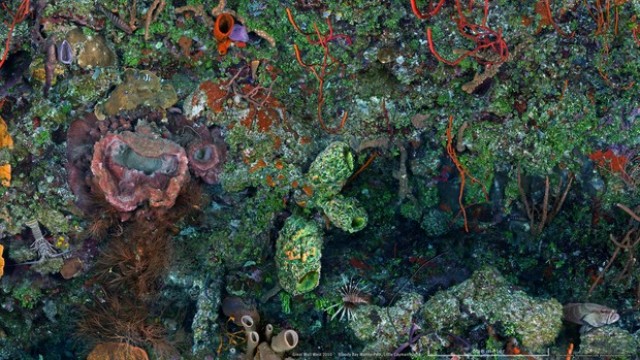
Splendid AMNH exhibit takes visitors on an informative journey deep into space (photo by twi-ny/mdr)
American Museum of Natural History
Central Park West & 79th St.
Tickets: $19-$33 (timed tickets needed for certain exhibitions)
212-769-5100
www.amnh.org
The American Museum of Natural History regularly takes visitors from the depths of the oceans to the outer limits of space, but the institution is now going a little deeper and farther in two special exhibitions. Much has been said recently about the government ending various NASA programs, but the AMNH’s “Beyond Planet Earth: The Future of Space Exploration” (through August 12) makes a strong case for the importance of journeying through the galaxy. The beautifully rendered exhibit visits the moon, Mars, Europa, and the Milky Way as well as the Itokawa Asteroid and the International Space Station, with focuses on the changing nature of space suits, the possibility of Earth being hit by an asteroid, the search for life on Jupiter’s Europa moon, the expandable Bigelow Aerospace module, the exquisite liquid mirror telescope, and the use of robotics in space, through life-size models, photographs, and interactive displays that even involve smell. Curated by Dr. Michael Shara, “Beyond Planet Earth” looks back at the space race between America and the Soviet Union, from Sputnik to the manned moon landings, while also examining the privatization of space tourism, led by Richard Branson’s Virgin Galactic. There is also a free app that creates three-dimensional animated images of a lunar elevator, a Mars spacecraft, the Curiosity rover, and other cool items featured in the exhibit.
“Creatures of Light: Nature’s Bioluminescence” (through January 6, 2013) explores the vast array of organisms that have the ability to light up, from fireflies and fungi to glowworms and jellyfish, from fluorescent corals and dinoflagellates to anglerfish and vampire squid. The exhibit travels from a New Zealand cave to Mosquito Bay on Vieques Island to the dazzling, interactive Bloody Bay Wall, consisting of hundreds of photographs of coral stitched together from images taken in the Cayman Islands. It also goes some 2,300 feet below the surface of the ocean, revealing bioluminescent plants and animals that glow in order to find mates, catch prey, and defend themselves against predators. Enhanced by informational iPad kiosks with a free app, the re-created environments — as well as a display of real flashlight fish — offer fascinating details about creatures rarely seen by the naked eye. Other current exhibits at the museum include “Picturing Science: Museum Scientists and Imaging Technologies,” the Journey to the Stars space show narrated by Whoopi Goldberg, the Flying Monsters IMAX film narrated by Sir David Attenborough, and the just-opened “Spiders Alive!”
